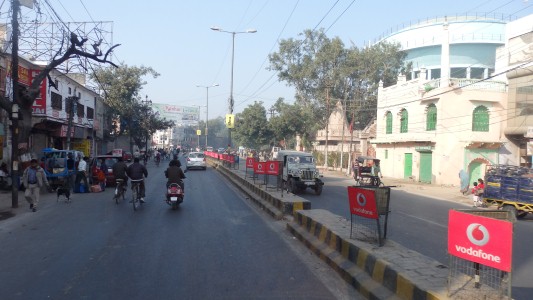
We finally found a large vodafone store in Agra. About $3.50 for unlimited internet for a month.
Our best deal yet on internet.
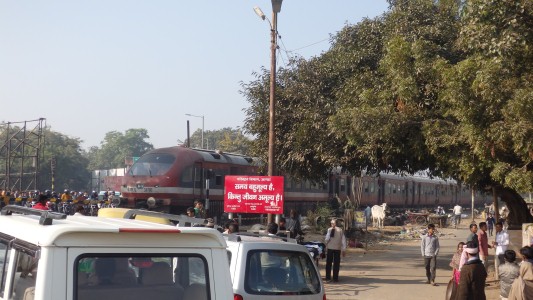
But no. There's a pattern. There's enough consideration shown that the traffic moves.
Not as aggressive as it looks.
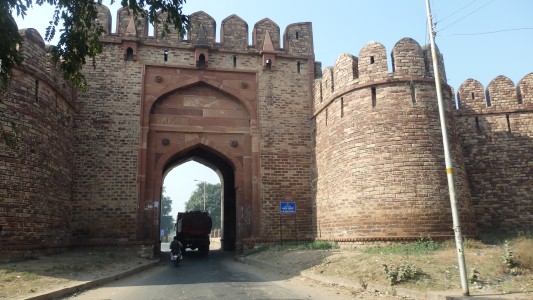
The capital of the Mughal Empire for a few years. Before it was moved to Agra as water supply became a problem.
We found a bit about the water in the Agra Red Fort. A three tiered system of tanks through which river water was lifted.
Agra Fort fell when those besieging the fort cut off the river supply.

The entrance is through the Buland Darwaza (victory gate) celebrating Akbar's victory at Ghujarat.
We headed to the Palace Buildings.
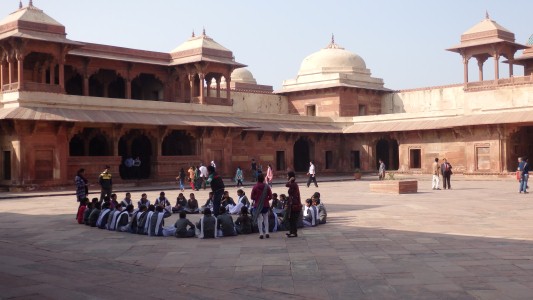
Nothing to do with Jodhbai, it was Akbar's principal Haramsara
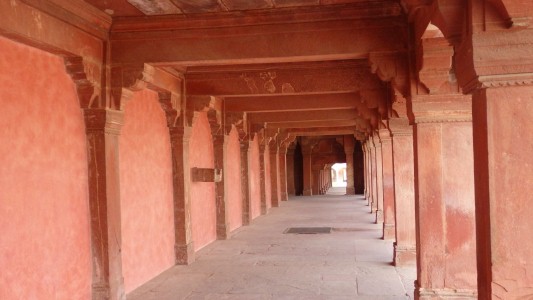
The vertical partitions are also sandstone slabs.
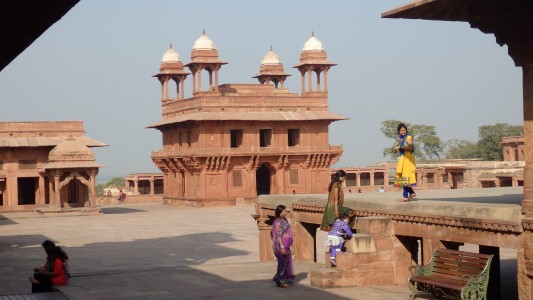
So we haven't got to the sign that tells us what the building is.
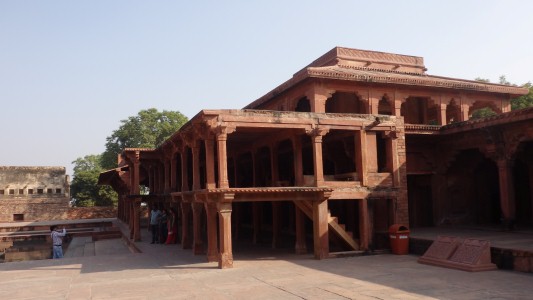
The Diwan Khana-i-Khass and Khwabgah.
There's a discrete passageway from the haramsara.

It occurs to us that the sort of construction we are seeing may well have evolved from something made in wood.
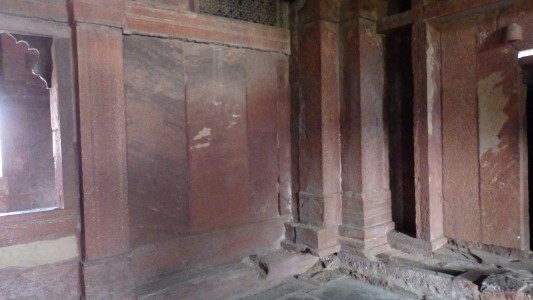
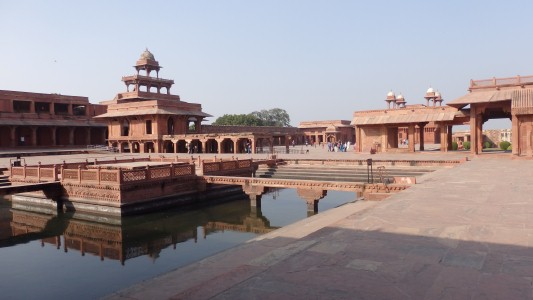
Translated as Peerless Pool.
For imperial amusement.
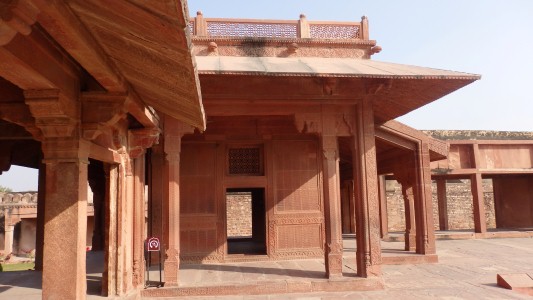
The Turkish Sultana's House.
Built before 1575.
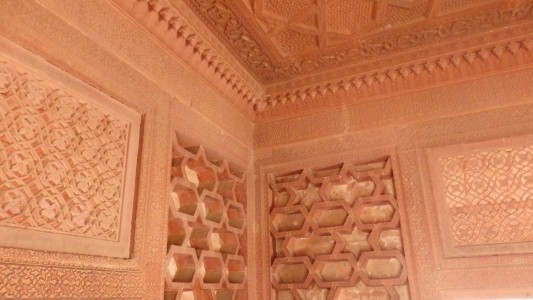
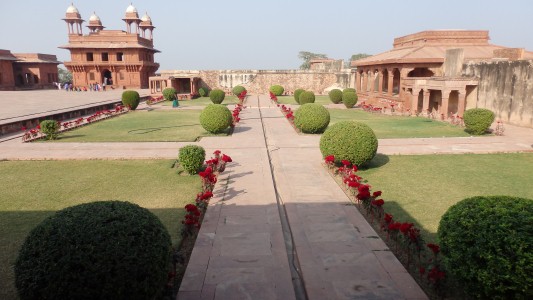
We were a little fed up on the way into the citadel from persistent kids wanting money and persistent guides wanting to guide.
The gardener's line was to try and sell us seeds for the cockscomb flowers. Aussie agriculture would have a field day!
We discovered later that the flowers are used to treat diarrhea and the seeds chest complaints.
Just what we need.
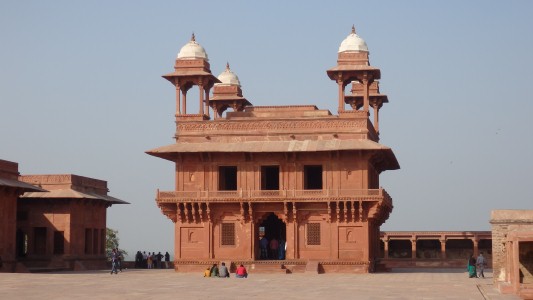
Diwan-i-Khass, the Jewel House.

Unique apparently.
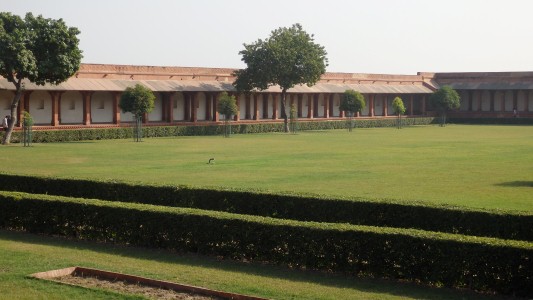
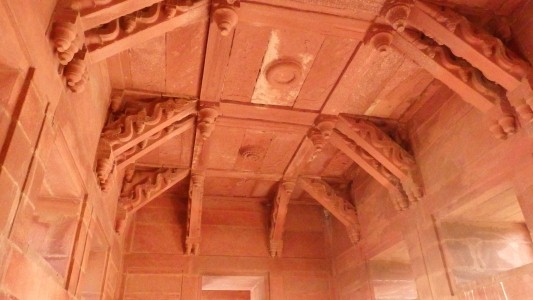

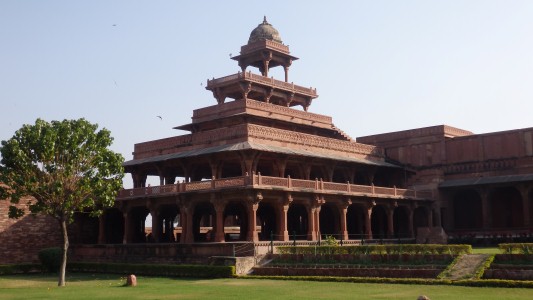
It needed 84 columns for the ground floor.
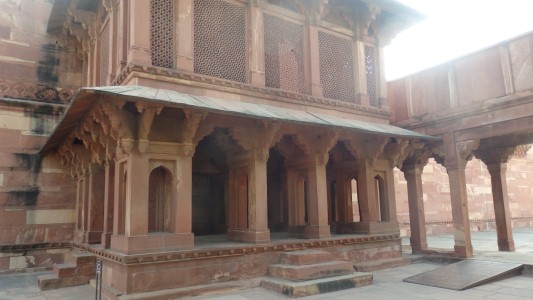
Sundhra Makan.
We are beginning to wonder how liveable some of the pavillions were.
What they looked like when inhabited.

But alas, no.
Part of the very extensive water supply.
Channeling it throughout the complex.
There are lots of places where water would have appeared through a wall and flowed across the ground in a channel.
But where did the water come from?

This is the elephant gate.
Not quite sure but possibly erected when his favourite elephant died.

Deserted now, we'll have to read elsewhere what life was like when occupied.
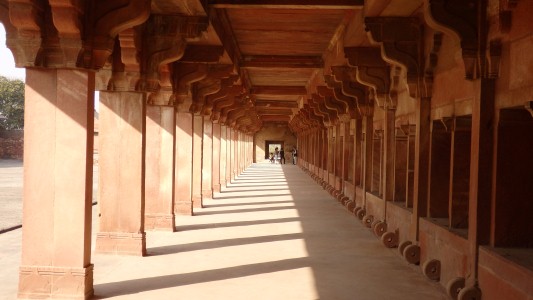
We read that the stone hitches may be associated with holding curtains used to partition the area.
We looked in vain for the other three for the remaining untehtered corners of curtains.
We are camped in the car park of the Goverdhan Hotel. Nothing particularly special, we'll move on tomorrow.